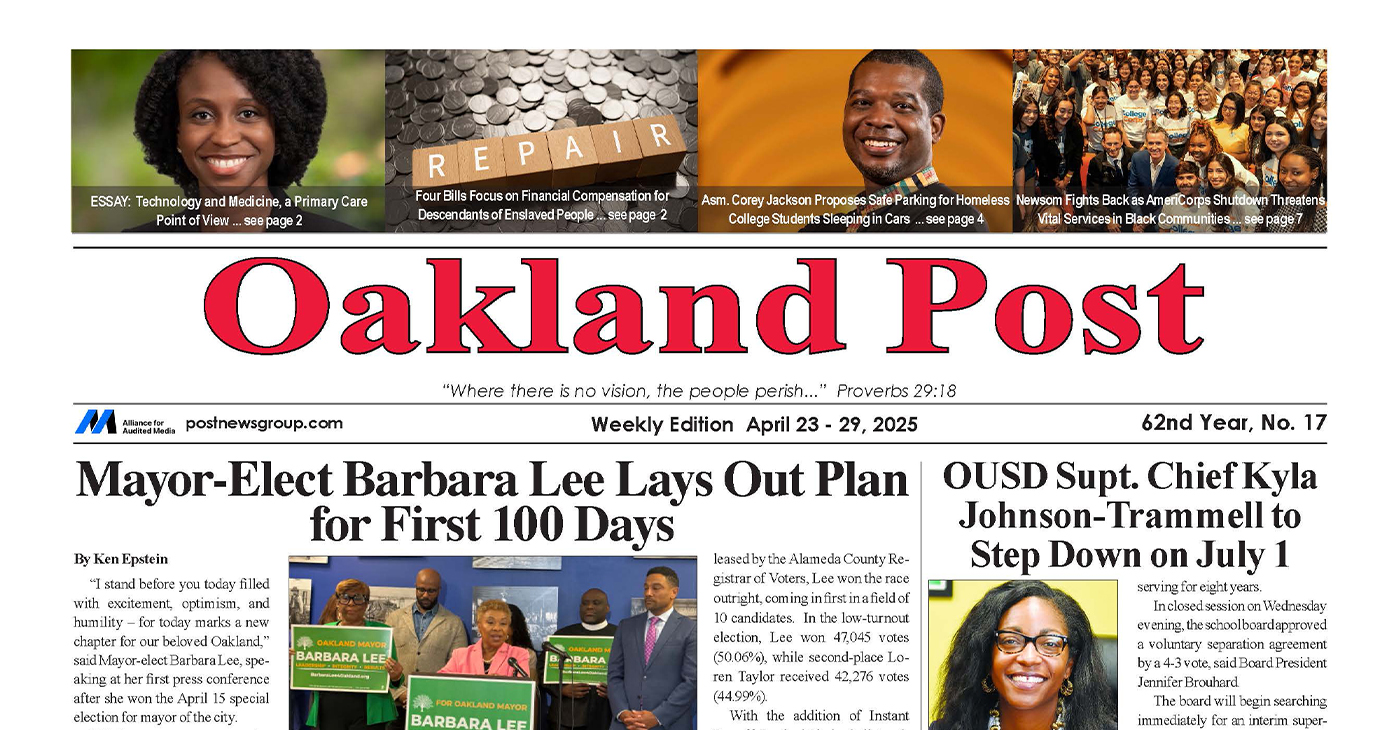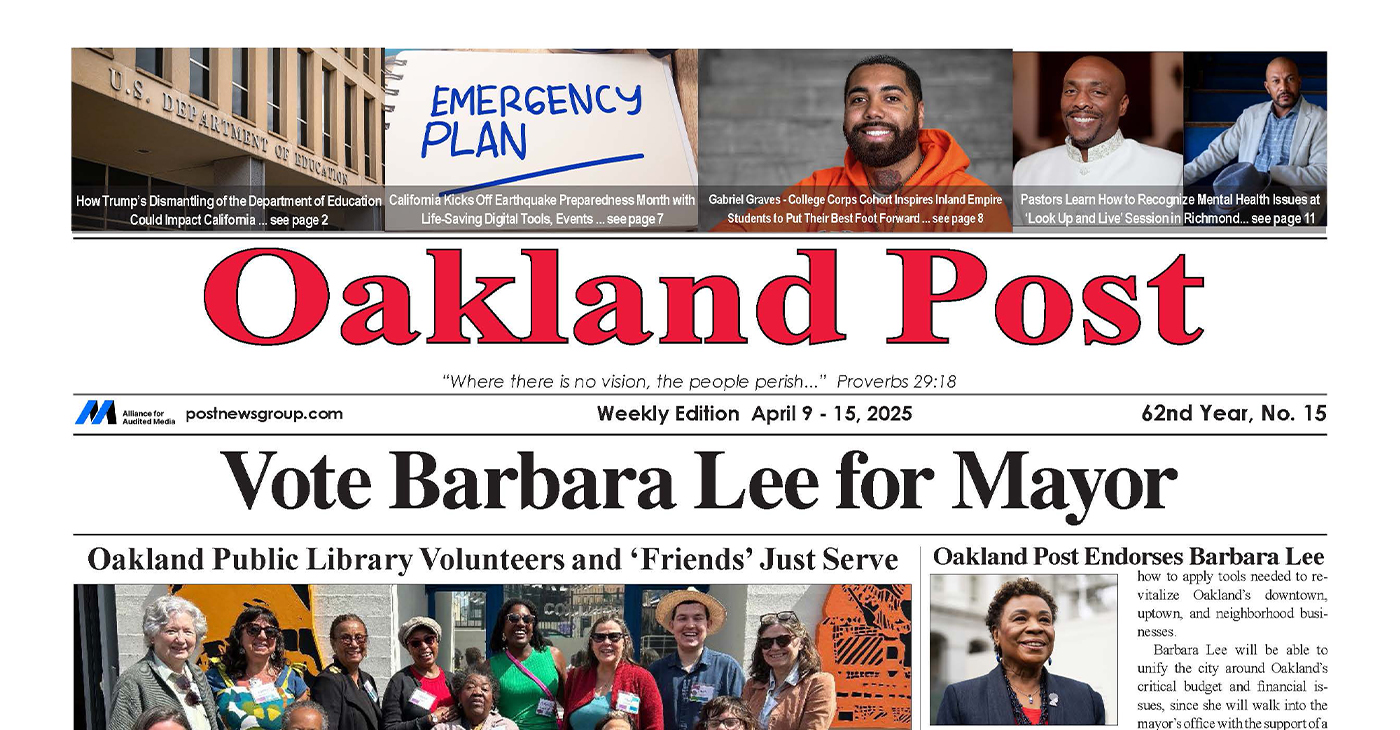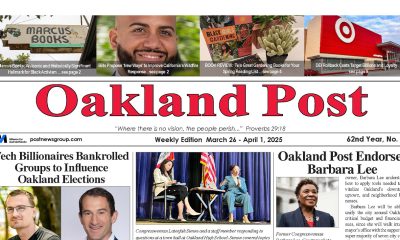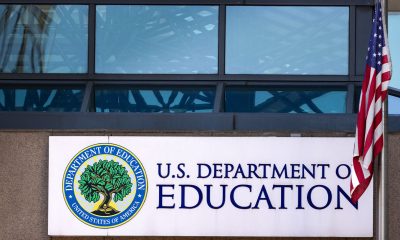Bay Area
East Bay Leaders Launch Regional Public Safety Partnership
East Bay leaders announced regional public safety and crime partnership at a press conference Wednesday morning along the Hegenberger Road Corridor as community concerns continue to grow throughout the area. City officials and law enforcement involved in the partnership include those from Oakland, Alameda, Berkeley, Emeryville and San Leandro.

By Magaly Muñoz
East Bay leaders announced regional public safety and crime partnership at a press conference Wednesday morning along the Hegenberger Road Corridor as community concerns continue to grow throughout the area.
City officials and law enforcement involved in the partnership include those from Oakland, Alameda, Berkeley, Emeryville and San Leandro.
“This partnership will enable greater coordination and regional strategies that prevent and deter crime, and hold these individuals accountable,” Berkeley Mayor Jesse Arreguín.
Arreguín stated that the groups and individuals committing these crimes aren’t constrained by one jurisdiction, but typically will cross city lines and get lost in the system because of the lack of data sharing and collaboration between the municipalities.
The leaders plan to meet quarterly to strategize on preventing and deterring violent and property crimes, and ensuring accountability. Their public safety goals also include:
- Leveraging regional consensus for legislative and fiscal advocacy
- Aligning efforts on strategic data analysis and sharing
- Enhancing public communication on crime trends and root causes
- Coordination the use of technology in crime prevention and public safety
- Aligning public health and behavioral health initiatives with public safety strategies
Oakland City Councilmember Treva Reid, whose district includes the Hegenberger Corridor, explained that this area is a billion dollar avenue with multiple businesses and the Oakland International Airport supplementing the revenue of the region.
“It’s an area of the city and county that carries the crippling weight of crime and public safety attention,” Reid said.
She added that a lot of investments have been made in that area of the East Bay to boost the livelihoods of those residing there, including the Rise East $100 million private investment to address systemic issues facing Black Oaklanders and the 30,000 jobs created by the African American Sports & Entertainment Group as they build out plans for the Oakland Coliseum sports facility.
Reid stated that Oakland has already implemented walking patrols and invested in more technology to catch suspects of crimes, including highway patrol cameras through Alameda County and CalTrans.
In regards to the law enforcement aspect of the regional partnership, OPD’s Captain Casey Johnson shared that the Hegenberger and 98th Avenue area has seen significant rises in burglaries and robberies due to its proximity to the airport, which allows for tourists and criminals to travel in and out of the city easily.
Johnson reported that there were up to 85 break-ins a day before he took over in the area, but after six months, the break-ins have reduced over 50% to 30 a day, which he acknowledged is still a fairly high number.
The captain also mentioned that the CHP officers that were deployed by Gov. Gavin Newsom last week will continue to patrol the East Bay twice a week until crime rates stabilize. Newsom’s office announced Wednesday that the deployment operation and temporary surge resulted in 71 arrests, 145 stolen cars recovered, illegal firearms and drugs seized.
Other city officials of the East Bay joined the announcement of the regional partnership, including Oakland City Councilmember Noel Gallo, who said while the collaboration was a good idea, they needed to start doing actionable initiatives in the city.
“We have an emergency in this city that we need to address. We can do all the policies and talking about it, but that’s not gonna change anything,” Gallo said.
Gallo stated that public safety should be the number one concern for every city, county, state and country, and called for the National Guard to come to Oakland’s streets to handle the rising crime.
“Look what Joe Biden and Congress are doing. They’re sending $80 billion around the world for safety, but they can’t take care of their own neighborhood,” Gallo told the Post.
Gallo is urging governmental bodies at the local, state and federal level to take action now instead of sitting around the table talking about the same strategies they’ve been discussing for years. He also blames the absence of an OPD chief for over a year as a show that there is a lack of political leadership that is needed to keep the city under control.
Activism
Oakland Post: Week of April 23 – 29, 2025
The printed Weekly Edition of the Oakland Post: Week of April 23 – 29, 2025

To enlarge your view of this issue, use the slider, magnifying glass icon or full page icon in the lower right corner of the browser window.
Activism
Oakland Post: Week of April 16 – 22, 2025
The printed Weekly Edition of the Oakland Post: Week of April 16 – 22, 2025

To enlarge your view of this issue, use the slider, magnifying glass icon or full page icon in the lower right corner of the browser window.
Activism
Oakland Post: Week of April 9 – 15, 2025
The printed Weekly Edition of the Oakland Post: Week of April 9 – 15, 2025

To enlarge your view of this issue, use the slider, magnifying glass icon or full page icon in the lower right corner of the browser window.
-

 Activism4 weeks ago
Activism4 weeks agoOakland Post Endorses Barbara Lee
-

 Activism4 weeks ago
Activism4 weeks agoOakland Post: Week of March 28 – April 1, 2025
-

 Activism3 weeks ago
Activism3 weeks agoOakland Post: Week of April 2 – 8, 2025
-

 #NNPA BlackPress3 weeks ago
#NNPA BlackPress3 weeks agoTrump Profits, Black America Pays the Price
-

 Activism2 weeks ago
Activism2 weeks agoOakland Post: Week of April 9 – 15, 2025
-

 #NNPA BlackPress3 weeks ago
#NNPA BlackPress3 weeks agoHarriet Tubman Scrubbed; DEI Dismantled
-

 #NNPA BlackPress3 weeks ago
#NNPA BlackPress3 weeks agoTrump Targets a Slavery Removal from the National Museum of African-American History and Culture
-

 #NNPA BlackPress3 weeks ago
#NNPA BlackPress3 weeks agoLawmakers Greenlight Reparations Study for Descendants of Enslaved Marylanders





















































